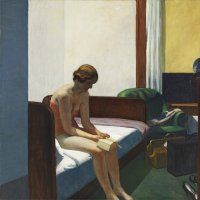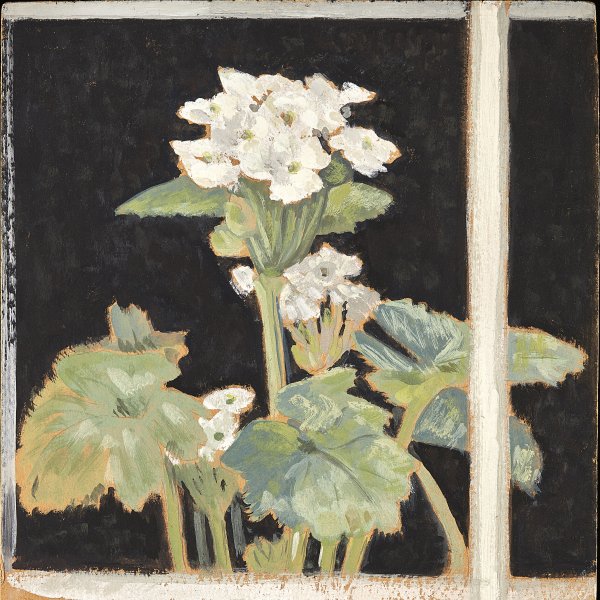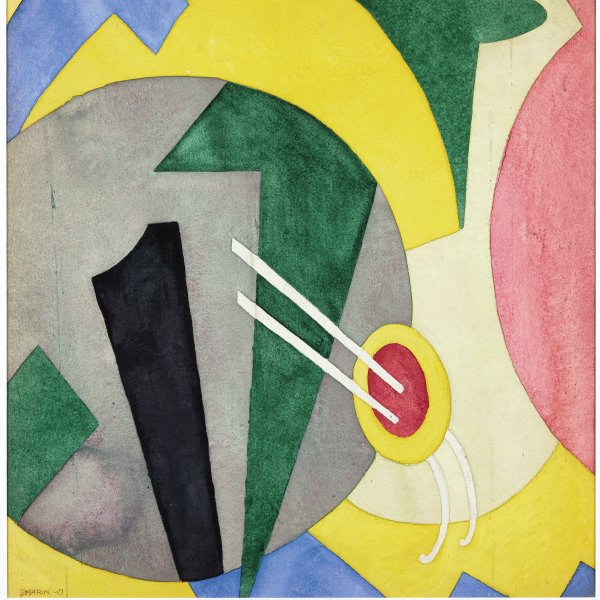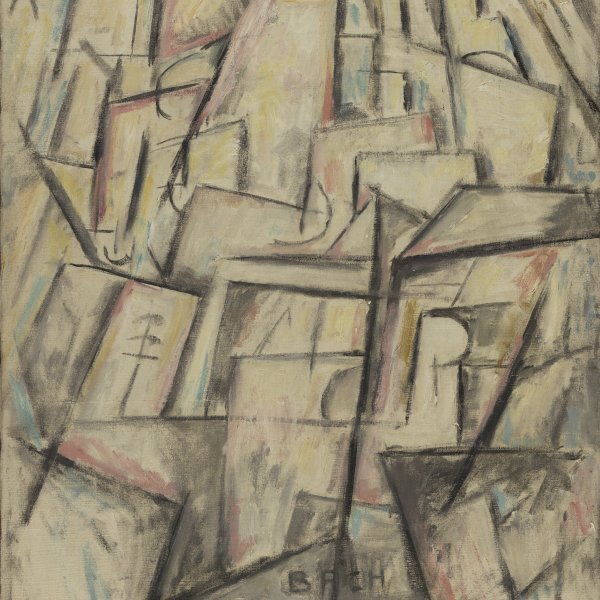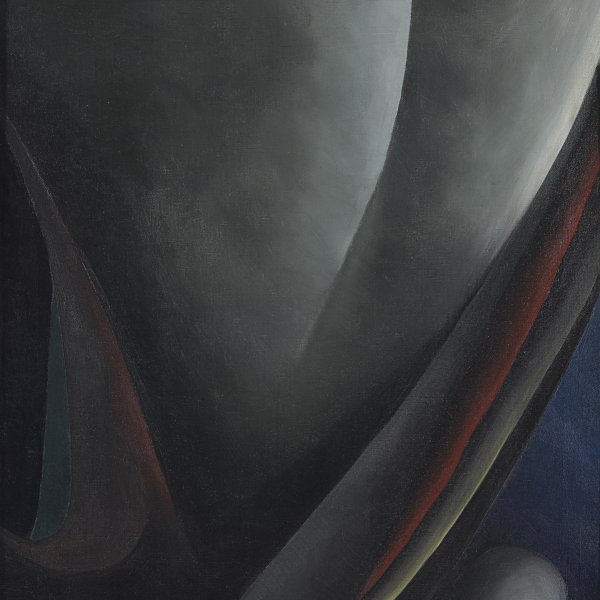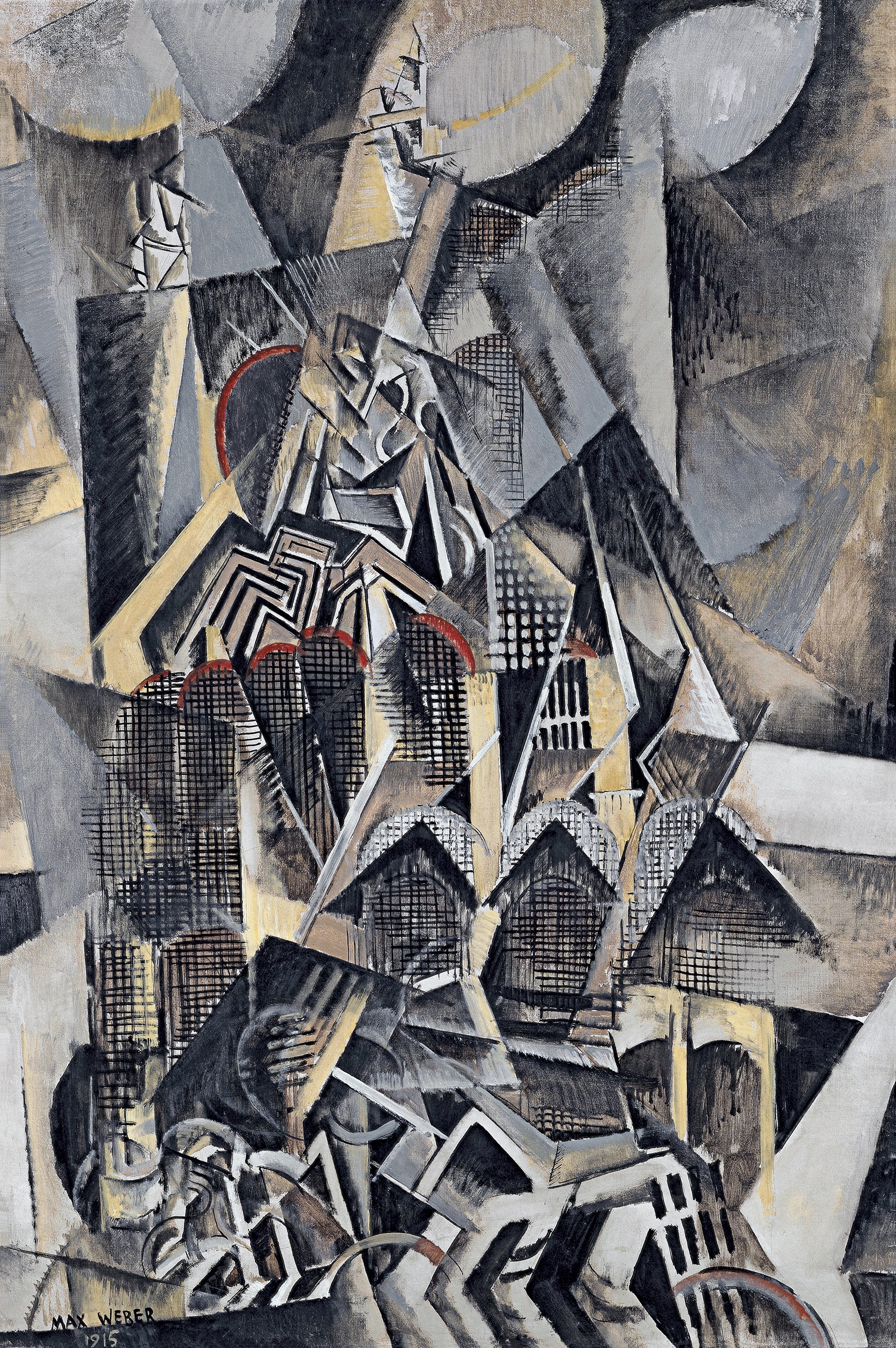Between 1913 and 1915 Max Weber, an émigré Russian Jew who had trained as an artist in Paris from 1905 to 1910 under the influence of Picasso and Matisse, produced several paintings on urban themes designed to convey the dizzy pace of the modern city New York had become. Among them is the Museo Thyssen-Bornemisza Grand Central Terminal depicting this central train station that was opened in 1912. These works, many of which were shown in the exhibition held at the Montross Gallery in New York, combine the influence of Cubism and Futurism. Whereas Weber borrows from Cubism the fragmentation and dull palette, his interest in Futurism lies particularly in its concern with representing the dynamism of the city. As in Rush Hour, New York, executed that same year, the painter attempts to transfer to canvas the sensations of speed and noise by depicting the seething mass of people in the rush hour, and creates simultaneous comings and goings that simulate the trains and passengers entering and departing from the station, in order to express the frenzied activity of the city.
Dominic Ricciotti notes that, although formally very different, Grand Central Terminal bears thematic similarities to Severini’s Metro Nord-Sud, painted in 1912, showing a bustling metro station in Paris. While certain representative elements can be distinguished in Grand Central Terminal — such as the triple arch of the station façade, the outline of a few skyscrapers in the lower part of the composition and the human figure in the upper part — it is much more markedly abstract than that of the Italian Futurist.
The cacophonous images that make up present work differ significantly from the structuring of classical Cubism. The dynamic repetition, which has sometimes been related to the image the eye receives of a car in movement, is also in keeping with Weber’s technical concerns on time and dynamic action in art. “In plastic art there is a fourth dimension, ” he wrote in 1910, “which may be described as the consciousness of a great and overwhelming sense of space-magnitude in all directions at one time, and is brought into existence through the three known measurements.” In his most ambitious theoretic essay published in 1916, Essays on Art, Weber pays special attention to concepts like space, time and memory, which were common to both Futurism and the ideas of Henri Bergson, whose work was then beginning to be translated in the United States. Nor should it be forgotten that, as Gail Levin suggests, Weber was then under the impact of having viewed Marcel Duchamp’s Nude Descending a Staircase at the Armory Show in 1913. To all these influences, Maria Grazia Messina and Maria Mimita Lamberti add that of the English Vorticists, whom Weber met through his photographer friend Alvin Langdon Coburn.
Paloma Alarcó
 Search
Ir al contenido principal
Search
Ir al contenido principal
